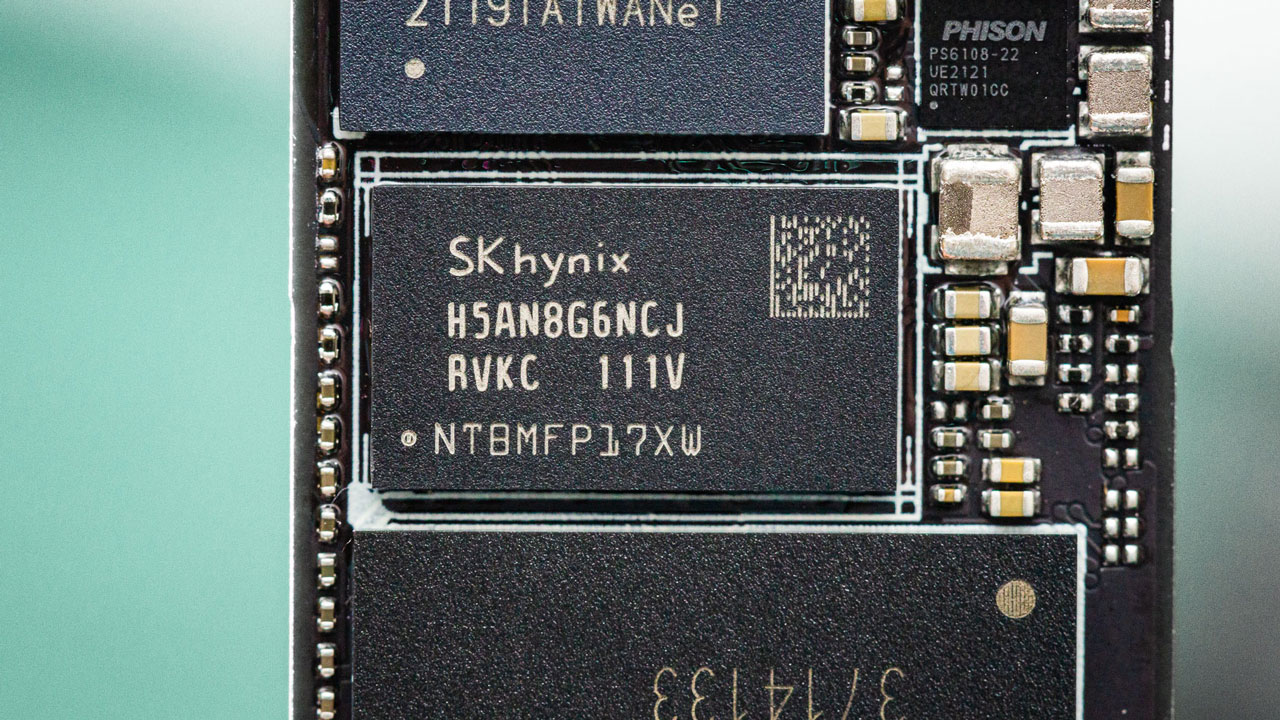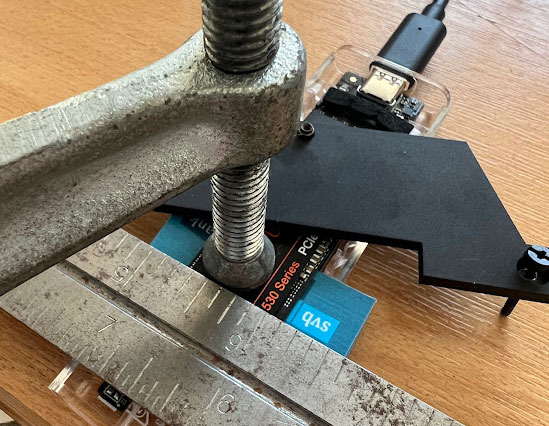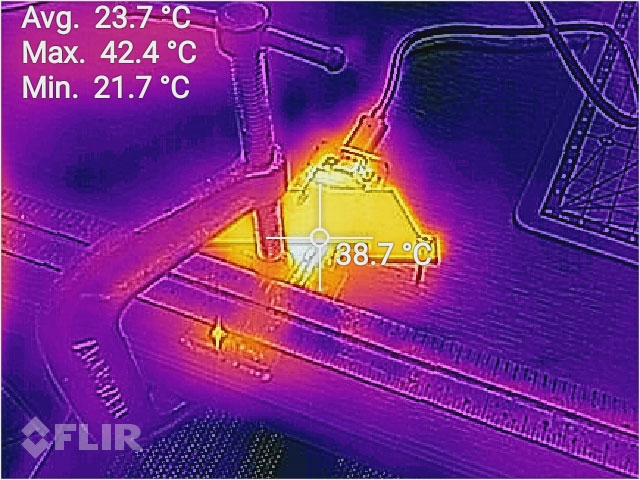
Whimsical tech blogger John Graham-Cumming recently wrote about fixing a faulty M.2 SSD using humble workshop tools that are typically used for woodworking endeavors. After a bit of detective work on a crash-prone PC, the blogger discovered one of his Seagate FireCuda 530 (review) SSDs was misbehaving. What managed to get it to work reliably again was strategically focused pressure from a G-clamp plus a carpentry square with a thermal pad.
Graham-Cumming describes the onset of his PC issues as starting with an in-game freeze, followed by a boot to BIOS loop. The blogger deduced that the debilitating PC issues were caused by one of his two Seagate FireCuda 530 SSDs, by trying various combinations of the two SSDs in his two M.2 slots.
It was subsequently discovered that the faulty FireCuda would work (briefly) when the system was started from cold. This observation pointed towards the dodgy drive having a problem that occurred only when its PCB / chips had reached a specific temperature. Confirmation of a thermal issue came from quickly testing the drive after a spell in the deep freeze. It was usable for a good few minutes before it failed this time.
That a thermally affected SSD component caused issues got Graham-Cumming thinking. Sometimes the expansion/contraction of PCB solder joints can cause problems, and it didn’t take long to find out that pressure applied to a particular chip made the FireCuda work ‘reliably.’



Above, some images show how the first working G-clamped SSD was put together. The second slide shows some refinement, with a PC thermal pad and carpentry square added to even the thermals. A thermal camera shot is also in the gallery, showing some portions of the SSD hit about 90 degrees Celsius when used.
With the woodworking tools cooling contraption in place, Graham-Cumming successfully shoveled his user documents to another drive for safekeeping.
Of course, not many people would be happy with this bulky SSD / G-clamp / set square arrangement sitting next to their workstation. The blogger felt the same and updated his post to tell readers he’d been inspired to heat the temperamental SK Hynix DDR4 cache chip with a hot air rework station. The result is that “the SSD works without having woodworking tools applied to it” and is OK to put back in the PC, according to Graham-Cumming.







